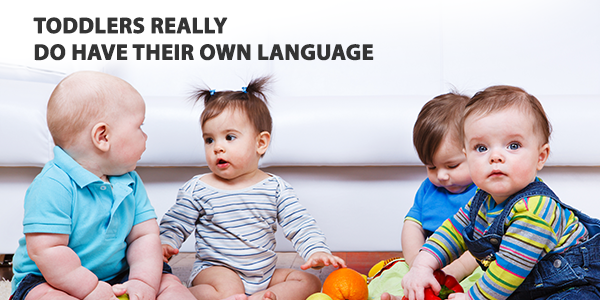
Aaaunn-aaaunn, baaaaaabbb, duuuuuuuuu or just the eyes.. babies start communicating from the moment they are born.
Initially, a newborn’s cry seems like just a cry but in a few weeks, its parents can easily respond to the needs from the way their little one cries. While we use words, babies express themselves through sounds like crying, cooing and squealing. They also use facial expressions like eye contact, pupil contraction, smile, lips, body gestures or movements to pass on their tinnie tiny messages.
Studies suggest that your little ones speak the language of their own. And, in that individual language, they develop grammar rules, words categories and tenses. According to the statistics, toddlers can learn up to 10 new words per day! Isn’t that amazing?
Doesn’t end there. Even at 6-8 months of age, kids begin to learn and use manual signs to communicate their needs. These gestures allow them to convey their needs without words. Hence, the hand muscles are developed before the speech muscles. With these early signs, kids learn how to draw attention to their needs and learn the concept of cause and effect which helps him or her communicate in the long term.
As your baby grows you can encourage it to use words instead of gestures. A great to do this is by creating a need for your child to use words to get what they want. Like, place your bub’s favourite chocolate on the table ensuring it’s out of reach for him or her. Just turn around and wait. Slowly, they will understand that if they want something, making a connection with words is important. Repeat this a few times to emphasize the usage of words over gestures.
With regular practice and exposure to daily activities the muscles in their mouth, the word associated with the action and the importance of it all helps them build their verbal communication skills.
For the newborns, here are some cues to look out for:
If your baby
- turns towards the breast
- makes a sucking noise
- sucks the fist
- makes little noises implying “trying to cry here”
- yells with her tongue up against the roof of her mouth
then your little one is hungry!
If your buttercup
- has eyes wide, bright and making an eye contact
- smiles
- pouts as though saying ‘ooh’
- has smooth movements
- grasps your finger or holds onto
then please play with your little bundle of joy!
Lastly, if your child
- becomes quiet
- stares into distance
- yawns
- sucks fingers
- fusses
- loses interest in people and toys
- makes jerky movements (in small babies)
- Clenches her fists into tight balls
then it’s naptime!